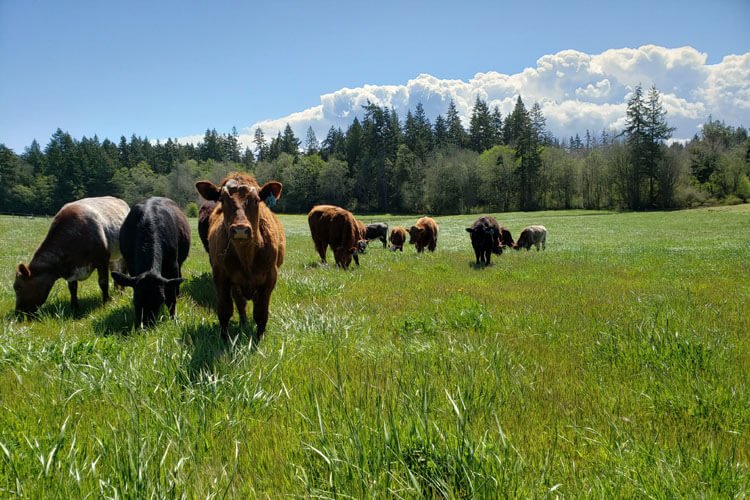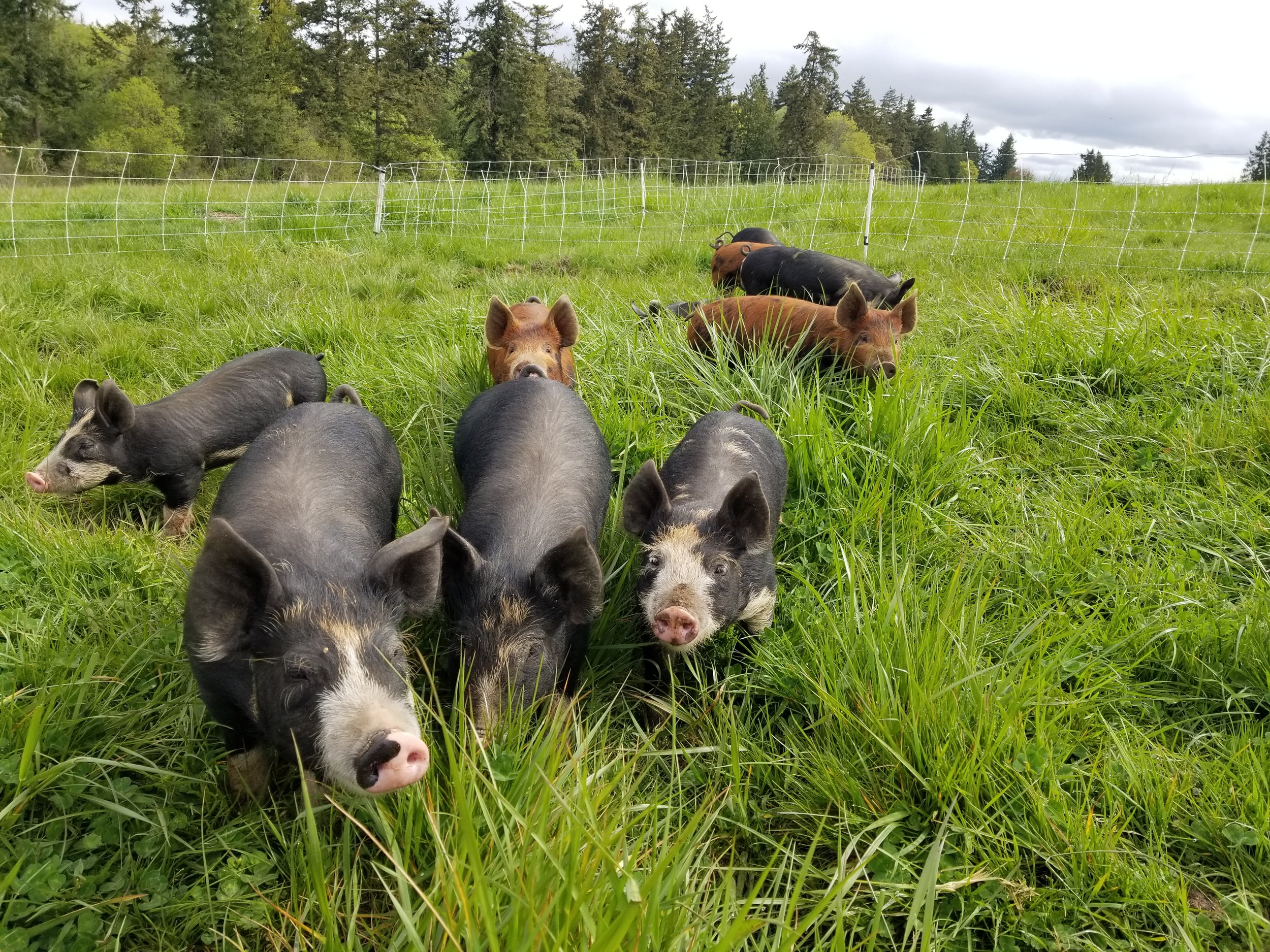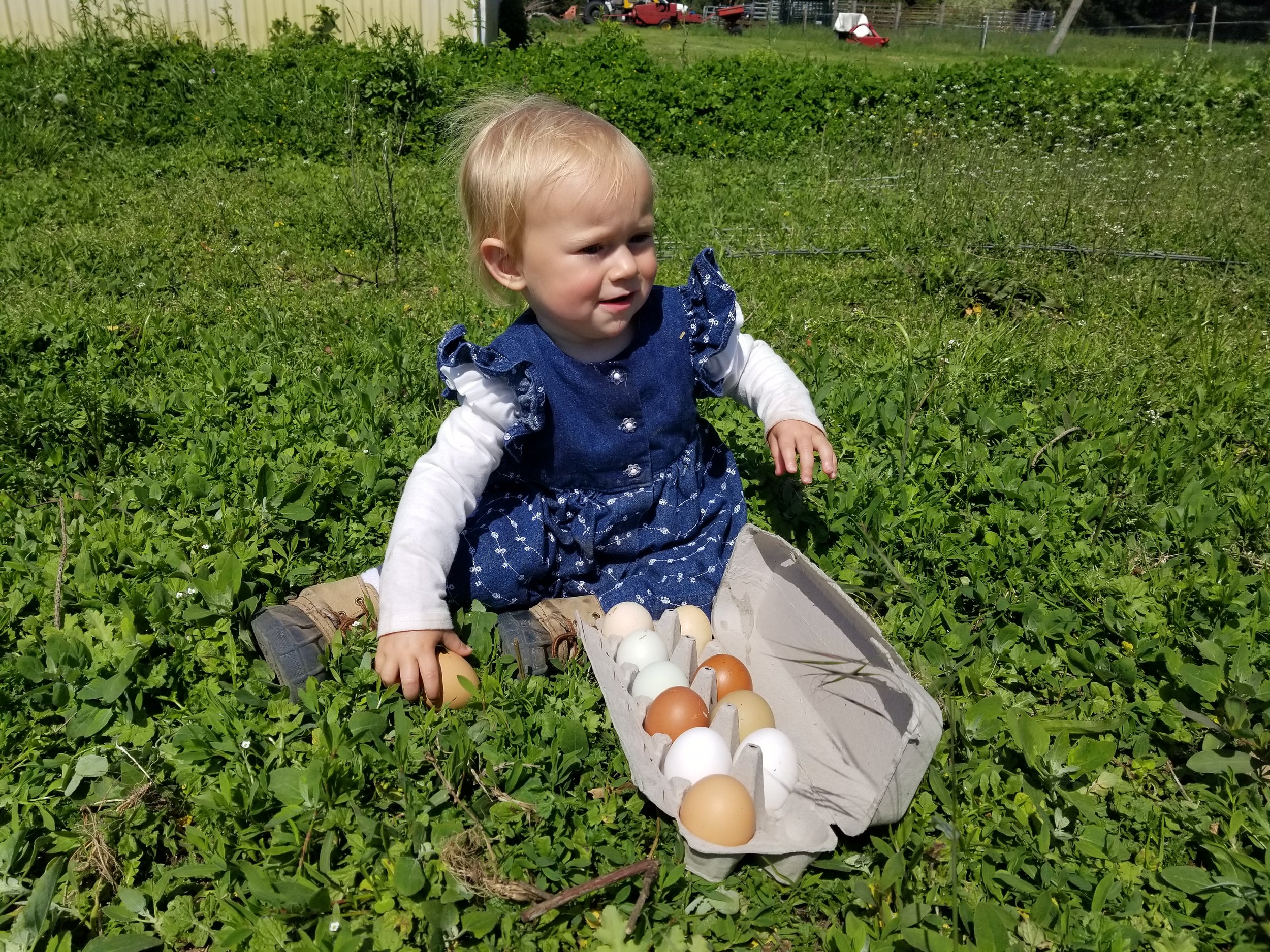The Co-op Farmers Fund: One Straw Ranch
The Food Co-op Farmer Fund collects donations from shoppers and then divides those funds equally between three local farms each quarter (the farms rotate each quarter). You can donate any amount online at https://www.foodcoop.coop/change-for-change or when you check out at the Co-op—just say you want to donate to the Farmer Fund or Change for Change. The farmers use the funds to provide their food to the Food Bank, the schools, or to subsidize CSAs, etc.
This summer our three farms are One Straw Ranch, SpringRain Farm & Orchard, and Dharma Ridge Farm. Keep checking back for blogs on each of the farms.
One Straw Ranch
Charlotte and Martin of One Straw Ranch grew up locally, but they didn’t officially meet until Martin returned from the Peace Corps and farming friends introduced them. Both come from local farming families—Charlotte comes from generations of farmers, while Martin’s parents started a 10-acre homestead here in the 1970s.
Martin’s experiences in the Peace Corps taught him that lasting change in a community comes from within that community, and he returned home inspired to be an agent for positive change. He came across the story of Joel Salatin, a farmer in Virginia who had transformed badly degraded land into a lush farm by utilizing the natural symbiotic relationships of his cows, chickens, and plants, and then sold what he produced locally. As Martin tells it, he “began to see agriculture as the place where environmental, human, and community health intersected, as if in a Venn diagram.”
Charlotte grew up among cows on her parents farm, and by the time she met Martin, she had her own herd, plus a flock of chickens. They shared a belief that livestock plays an essential part in the natural system, and at One Straw Ranch, they set out to embody the convergence of ecology, health, and community they believe farming can be.
Today they raise cows, pigs, and chickens, all of whom spend as much time as possible outdoors, making for healthy, happy animals. When the fields are too wet for the cows, they are fed hay, never grain. For the supplemental feed pigs and chickens need, Martin mixes grain from Sequim with other non-GMO and/or organic ingredients. The animals are allowed to graze and root around as they do naturally (except when the fields are too wet and the rooting would damage the soil). To prevent overgrazing and at the same time allow the cows to contribute natural soil-improving amendments to the fields, they use solar electric fencing so they can move the cows between different hayfields and pastures.
While both Charlotte and Martin grew up around animals and read extensively about farming techniques, Charlotte says that much of what they know they learned through observation and trying things out. “The animals teach us,” she says. In fact, when I asked Charlotte their favorite part of the ranching day, she singled out spending time watching the animals, “It’s good husbandry practice but also soothes the soul, calms the mind, and makes us happy.”
The lessons and rhythms of farming help Charlotte and Martin face the difficulties and uncertainties of the last few years with equanimity. As Charlotte says, “One thing you learn in farming is that very few situations are all good or all bad.” The cold rainy spring meant the grass was slow to grow, but it also meant grass lasted later into summer. And the shortages of the early pandemic led people to seek out more local food. In fact, local farms such as theirs helped ensure that the Co-op could feed our community, when supply chains were severely disrupted during Covid. Costs, however, are definitely rising, from those supply-chain disruptions and also from bad weather, which has raised the price of hay and feed. Luckily, our community values good, local food, and Charlotte and Martin love providing it. When I asked if there was anything they’d like to tell our members, Charlotte said, “We love growing the most delicious food for our customers and providing a connection to the natural rhythms of sun, grass, rain, and soil that sustain our lives.”
You can buy One Straw Ranch meat and eggs at the Co-op and from their website, onestrawranch.com. They also supply ground beef to the Food Bank, and you can help in that endeavor by donating at https://onestrawranch.com/store/product/ground-beef-donation. The Food Bank says ground beef is just what people ask for. And don’t forget to check out their farm journal blog. It’s always a fun read. Perhaps start with Charlotte’s story of her milk cow, Alba, at https://onestrawranch.com/blog/over-the-rainbow.






